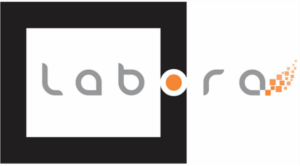Energy Efficient Opportunistic Wireless as Digital Inclusion Support and Easy Access to Information in Southeast Goiás-Brazil
The lack of network infrastructure and communication technologies and services results in a high rate of digital exclusion in rural area of southeast of Goiás-Brazil. Despite the public and private investment of various sectors of society, the population suffers from a lack of Internet connectivity generating social, cultural and economic losses immeasurable for the entire state of Goiás. This project aims to study, validate, optimize and implement technologies and infrastructure communication in energy-efficient opportunistic wireless to facilitate and exchange the information and knowledge in the southeast of Goiás. Thus, applications related to medicine, education, agriculture and environmental protection can easily be used to improve the population’s life quality isolated rural areas. The solutions have been evaluated and validated through simulators (Opportunistic Network Environment (ONE), Network Simulator (NS-2 / NS-3)) and real test bed (free prototype hardware Arduino). In addition to benefits for the target community, this project aims at exchanging experience among undergraduate students, postgraduate researchers and institutions involved, resulting in increased qualification of such knowledge in this area.
Along with these difficulties of access to information and global warming that is currently increasing by the day, it is imperative to reduce carbon emissions of ICT solutions. Studies show that ICT solutions account for 2% to 3% of total carbon emissions on Earth and that 50% of all energy used in the ICT sector is consumed by wireless access networks. Thus, reducing energy consumption through referral mechanisms/routing energy efficient contributes substantially to the reduction of gas emissions, helping to protect the environment from global warming.
Hence, this project focuses on sporadic contacts that occur between the different elements (e.g., vehicles, people, schools, health centers, etc.) that make up the rural areas and can establish an asynchronous form of communication with others elements in urban centers. This means taking advantage of the flow of vehicles (buses, ambulances, trucks, dairy, etc.) for transporting passengers, goods and patients daily between rural and urban areas to facilitate the exchange of information and increase digital inclusion index. At the same time, the project has a concern with the environment proposing solutions that are energy efficient.
This type of communication is found in Energy Efficient Opportunistic Wireless Networks, where devices operate following the Store-Carry-Forward paradigm (SFC). That is, the devices store and take (store-carry) the information to find another device (intermediate or final) to forward it. Since this type of network uses low-cost equipment, this communication alternative for rural areas becomes attractive beyond the fact easily meet the needs regarding the exchange of community information.
